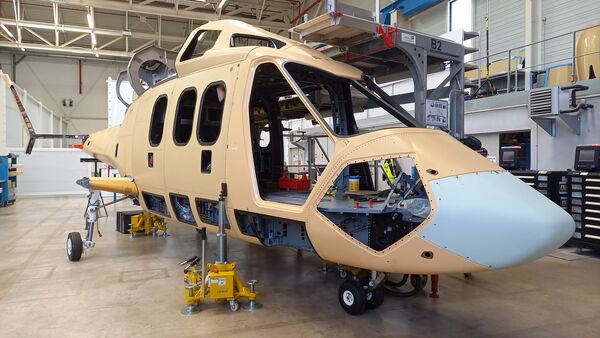
Seen in its current state of manufacture, the Airbus RACER high-speed rotorcraft demonstrator is one concept that could be leveraged to suit the requirements of the NATO NGRC. (Janes/Gareth Jennings)
The European NATO allies of France, Germany, Greece, Italy, the Netherlands, and the UK launched the concept phase of the Next-Generation Rotorcraft Capability (NGRC) on 16 June.
Working with a budget of EUR26.7 million (USD27.8 million), the six intend to produce a common set of requirements in three years.
“This is the first milestone of an important project,” said Mircea Geoană, NATO's deputy secretary general, at the concept phase's signing ceremony. “Medium-lift is a vital part of NATO's set of enablers, and this concept will be crucial to the project's success, which will take years of careful planning and development.”
The NGRC project was initially launched via a letter of intent in November 2020 as a five-nation effort, with the Netherlands joining more recently (Spain and the US are listed as observer nations).
Ben Wallace, secretary of state for defence for the UK, the lead nation for the NGRC group, added, “We don't want an aircraft that is over-specified or under-specified, but bespoke to our needs. The customer[s] have to be very clear about the requirements we want so that industry can invest as needed. If industry knows that, we will all have competition and thus choices as ministers.”
The concept phase will examine new structural and functional technologies for incorporation into the NGRC's future design, such as hybrid and electric propulsion systems, substantially improved flight characteristics, and open system architecture for modular plug-and-play suites and subsystems. The NATO Support and Procurement Agency will oversee the three-year concept stage.
NATO told Janes
Looking to read the full article?
Gain unlimited access to Janes news and more...







